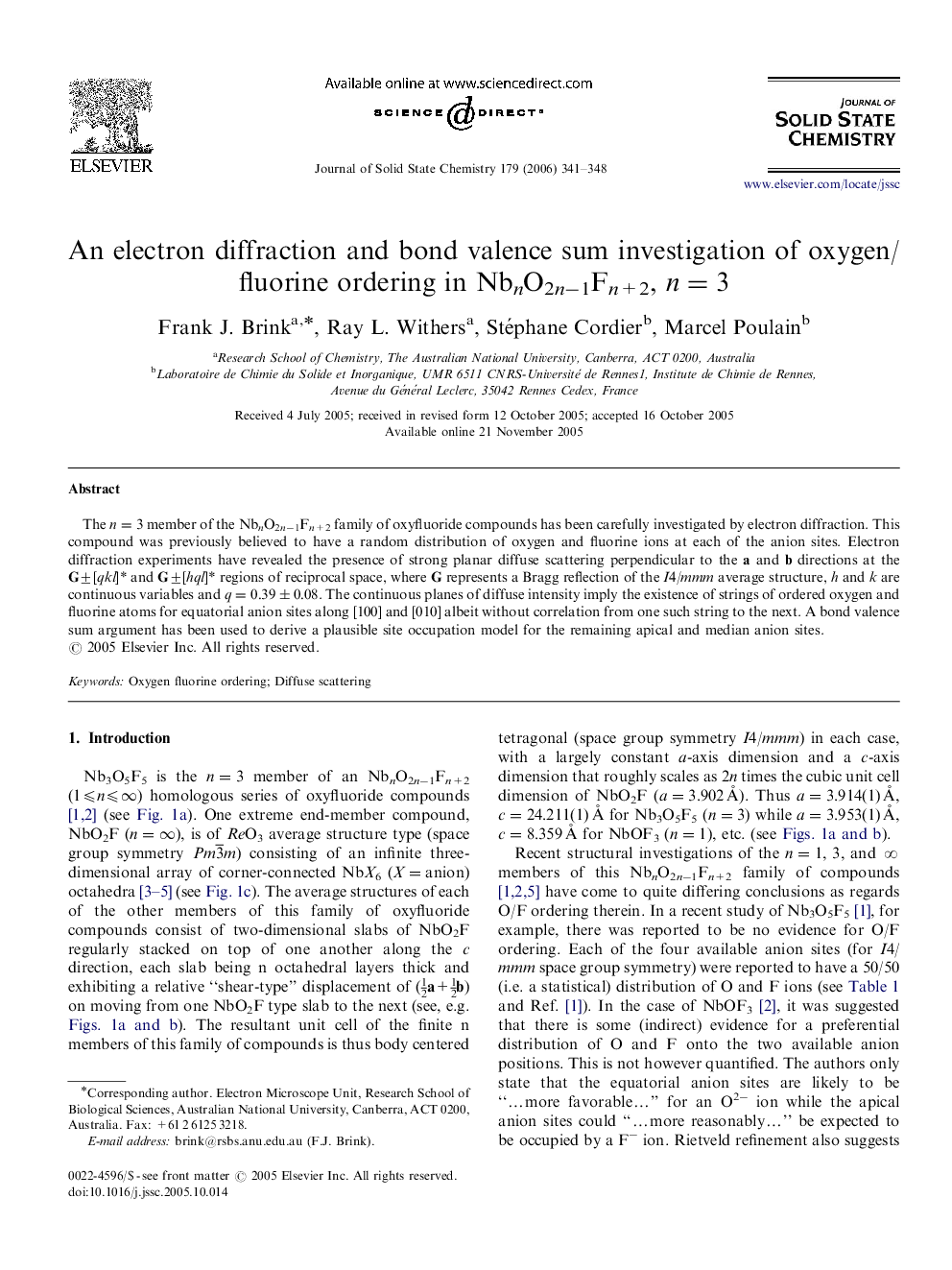| Article ID | Journal | Published Year | Pages | File Type |
|---|---|---|---|---|
| 1333973 | Journal of Solid State Chemistry | 2006 | 8 Pages |
The n=3n=3 member of the NbnO2n−1Fn+2 family of oxyfluoride compounds has been carefully investigated by electron diffraction. This compound was previously believed to have a random distribution of oxygen and fluorine ions at each of the anion sites. Electron diffraction experiments have revealed the presence of strong planar diffuse scattering perpendicular to the a and b directions at the G±[qkl]* and G±[hql]* regions of reciprocal space, where G represents a Bragg reflection of the I4/mmm average structure, h and k are continuous variables and q=0.39±0.08q=0.39±0.08. The continuous planes of diffuse intensity imply the existence of strings of ordered oxygen and fluorine atoms for equatorial anion sites along [100] and [010] albeit without correlation from one such string to the next. A bond valence sum argument has been used to derive a plausible site occupation model for the remaining apical and median anion sites.
Graphical abstractShows typical [11¯1] zone axis EDP for Nb3O5F5. Note the strong essentially continuous, transverse polarized diffuse streaking along the [h0l]* and [0kl]* directions of reciprocal space. Such streaking is shown to be consistent with ordering of O/F along the a and b crystal directions.Figure optionsDownload full-size imageDownload as PowerPoint slide
